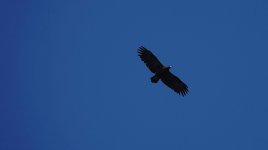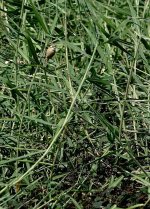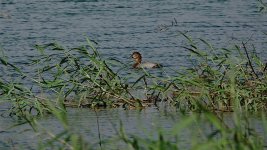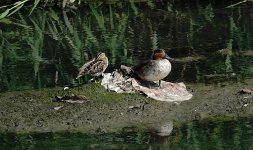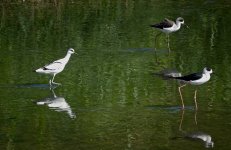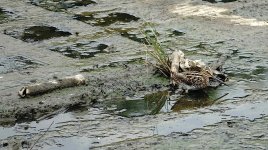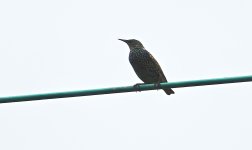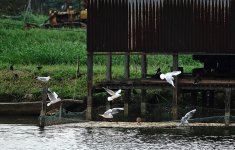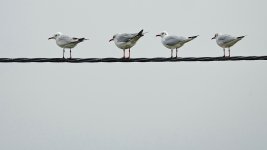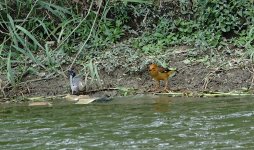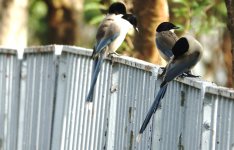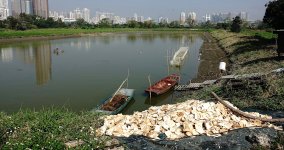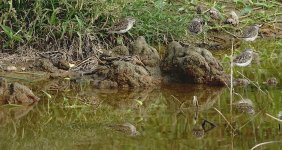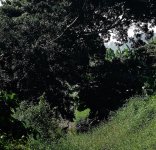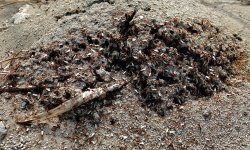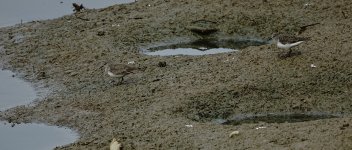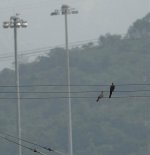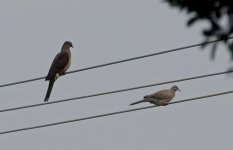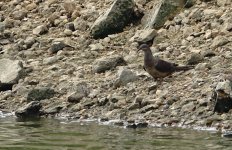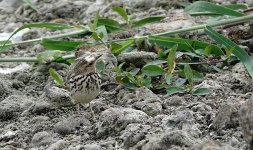Many thanks Tom.
I too have always thought getting Steller's on my China list is something to aspire to! I can imagine combining it with a winter owling trip ... one day ...
Nearly finished with my Japan trip, but last weekend at San Tin is a new source of excitement.
A far cry from the hot and polluted weather of the previous weekend last Saturday was cooler and sunny with a nice easterly breeze and the whole site seemed to have more of a spring in its step. I saw a few more species - 83 vs 79 - but various common birds were more visible - including
Common, White-breasted and Pied Kingfishers, big flocks of
Silky Starlings, a few more
White-cheeked Starlings and
Red-rumped Swallows had increased from two to eighteen and were very much in residence rather than stopping briefly on their way elsewhere.
Eight Temminck's Stints were foraging around the potholes created by catfish in a mostly-drained pond. The
Pied Harrier I've not seen for a good few weeks put in an appearance and a couple of female
Falcated Ducks were on the grass-fringed pond next to San Tin. It got extra scrutiny as pictures emerged from an overseas visitor to Mai Po of what looks like Hong Kong's first Hen Harrier! Three Eastern Buzzards were thermalling over Lok Ma Chau with a Greater Spotted Eagle, and another Eastern Buzzard was chased off by a very persistent Collared Crow.
I was delighted to see that
Tufty numbers had risen to an amazing 650 birds on the pond just southeast of the rickety bridge (and 722 altogether across the site), and among them were a couple of female
Scaup, and my first two
Garganey for a few months.
Things became really exciting when a dark, long tailed dove with a contrasting grey head and neck flew past me. I immediately thought of
Barred Cuckoo-Dove and was delighted and amazed when it landed on an overhead wire right next to an obviously paler and shorter-tailed Spotted Dove. I immediately grabbed a shot to document it - as I was aware that some Spotted Doves can be significantly darker - and the second shot below proved that I was not hallucinating! There are less than ten records of Barred Cuckoo Dove in Hong Kong and there is no good reason why a forest dependent species should appear on a fishpond wire. My amazement was tempered by that fact that Paul Leader had seen a one drinking from a rainwater puddle in mid-November at Lok Ma Chau, but when it was not relocated we presumed it had moved on.
It obviously hadn't, and the reason why became apparent a few minutes later when it dropped off the wire to feed with a couple of
Spotted Doves on the stale bread dumped into a fishpond to feed the carp and mullet. There's a short clip on my Youtube channel (
here). It was somewhat shocking to see this most elegant of forest aristocrats slumming it in such fashion. But presumably even aristocrats need to eat, and it had clearly decided that a full belly of stale bread was better than a dignified starvation. After a few minutes it flew off westwards leaving me to celebrate an amazing patch tick.
Carrying on I headed for the northeastern corner to try to nail all the doves on site. I was pleased to find four
Red Turtle Doves in their favourite tree and an
Oriental Turtle Dove shot out of the drainage channel between Lok Ma Chau and San Tin. I was also surprised to find a winter male
Yellow-breasted Bunting sat on a bare bund nearby and grabbed a couple of shots of a friendly
Red-throated Pipit with some leucism on the crown.
There's more to come (lots!) but my bed beckons, and I'll post pix, and the rest of the weekend's birds in the next day or so.
Cheers
Mike



